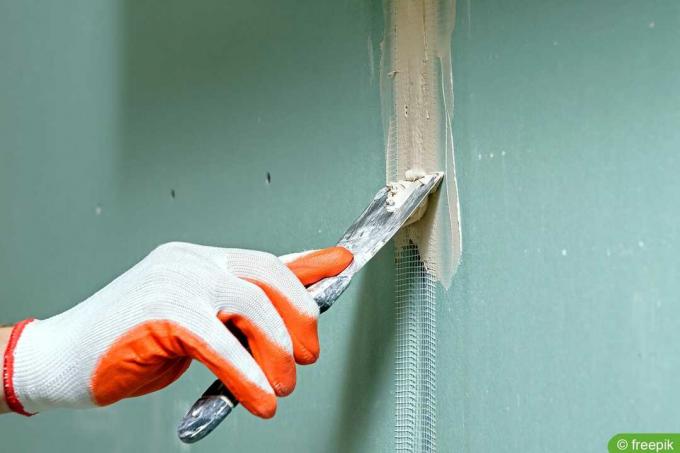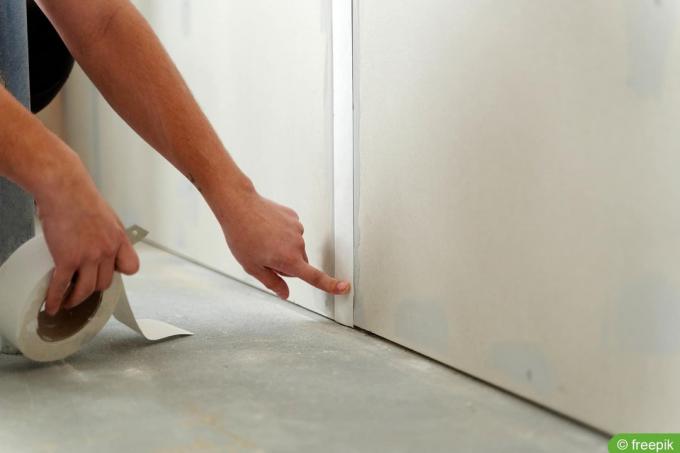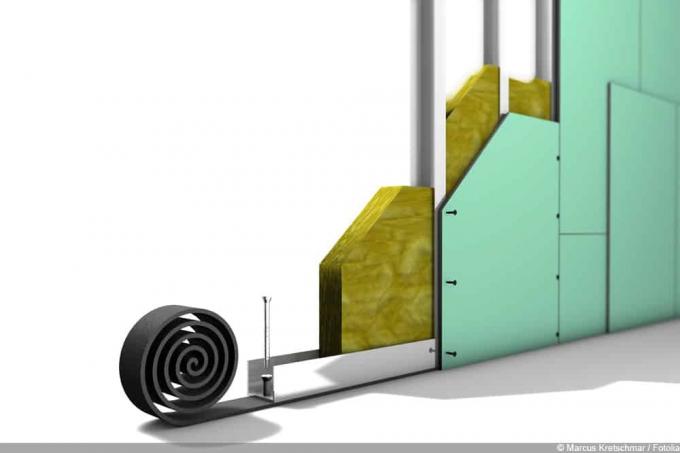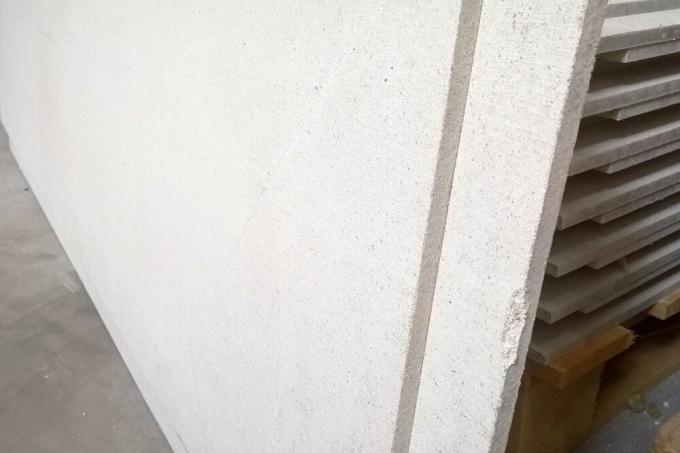

Table of contents
- Rigips without fabric tape
- Rigips with joint tape
- Differences in spatula
Rigips is versatile, comparatively easy to attach and inexpensive. The benefits can be extended by using joint tape, as it reduces the risk of cracks and increases the service life.
Rigips without fabric tape
After attaching the panels, the joints between them must be closed. The same applies to gaps and other distances that arise, for example, through the use of lights or sockets. On the one hand, this is important for the insulation. On the other hand, the appearance and stability benefit from the closed joints.
The introduction of joint filler is sufficient for this if the conditions in the room are comparatively constant. These influences include:
- humidity
- temperature
Because of this, plasterboard can contract or swell. Because of this property, the joints will in turn become larger or smaller and the jointing compound will be compressed or under tension. This can create an uneven surface or result in cracks.

However, if the factors remain the same, this risk does not exist. The use of fabric tape is therefore not absolutely necessary.
Tip:
Special joint filler is usually sufficient if there are very small gaps or unevenness. It has properties that also prevent the formation of cracks.
Rigips with joint tape
The use of cloth tape before filling seems like an unnecessarily large effort at first. In the medium and long term, however, this saves effort. This is especially true when the following factors apply:
- larger joints or distances
- Humidity varies significantly
- strong fluctuations in temperature
- numerous cutouts
Tip:
In addition, the effort is only slightly increased by the use of joint tape. The strips are simply cut to the required length and attached. More is not necessary to prevent cracks or at least to reduce the risk of them.
Differences in spatula
There are significant differences in the joint tapes or strips. Self-adhesive versions are particularly practical for both professionals and amateurs. Although they are more expensive to buy, they can be installed much more easily and with less effort. Laying is also cleaner and faster, since there is no need to prepare or clean utensils.

Dry variants must be provided directly with filler. Alternatively, they can also press into the previously applied mass. This requires a very precise dosing of the filler so that no excess has to be removed. The joints must therefore be removed beforehand. With a little practice, this is easily possible, which means that the use of dry versions of the fabric tapes is particularly suitable for larger areas.
Aside from these key differences between tear prevention strips, there are other criteria that are important.
Therefore, when choosing joint strips, the following factors should be considered:
- sufficient width of the tape
- breaking strength
- low strength
- good bond to the filler
- high quality
These decide whether the variant is suitable for use when filling and whether the result is as long-lasting as possible.
 Home editorial office
Home editorial office
Learn more about drywall

Rigips substructure: spacing of the battens
Rigips panels are useful for cladding walls and ceilings. Screwing it to the substructure is also easy. But the distance between the battens and counter battens that needs to be kept raises questions again and again. Here are answers.

Where can you dispose of plasterboard cheaply?
Sheetrock panels are used during construction or renovation work and it is not uncommon for some of them to be left over that have to be disposed of. Since this is classic construction waste, disposal is associated with costs. However, cheaper disposal alternatives are readily available.

build a stud wall | Cost & Instructions for Lightweight Wall
Building a stud wall - to create a confined space - can be practical, but it is always easy and relatively inexpensive. But how does the structure work and what costs must be expected? Our guide will tell you.

Laying Fermacell panels | 10 and more processing and trimming tips
Laying Fermacell panels is also possible for laypeople without any problems if they pay attention to a few special features and the right procedure. With our tips for processing, cutting and laying, it's really easy.

Creating a shadow gap on the ceiling | Drywall & wooden ceiling
A shadow gap is always necessary for ceiling cladding, but it also comes with a number of advantages and options. A precise and coordinated procedure is important when preparing the joint. With our instructions it works without any problems.

Cladding a wooden ceiling with plasterboard: this is how you screw panels onto plasterboard
Removing old wooden ceilings takes a lot of effort. It is easier if you cover the ceiling with sheetrock. The panels are easy to process and can be designed according to your wishes.



